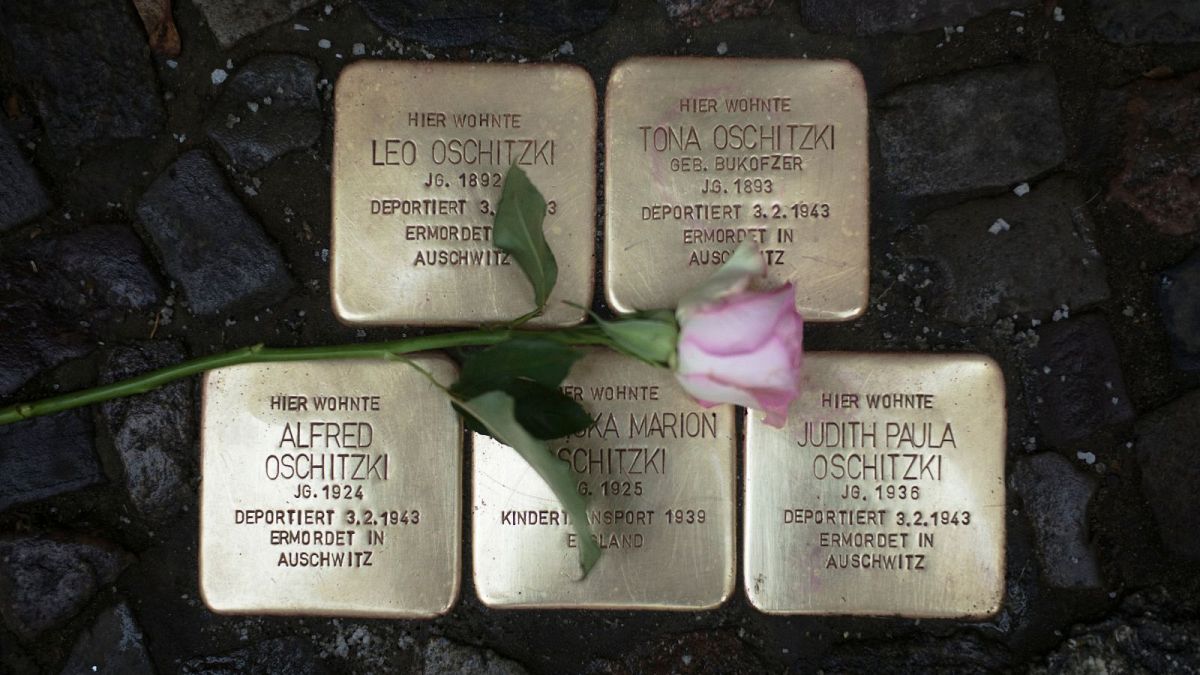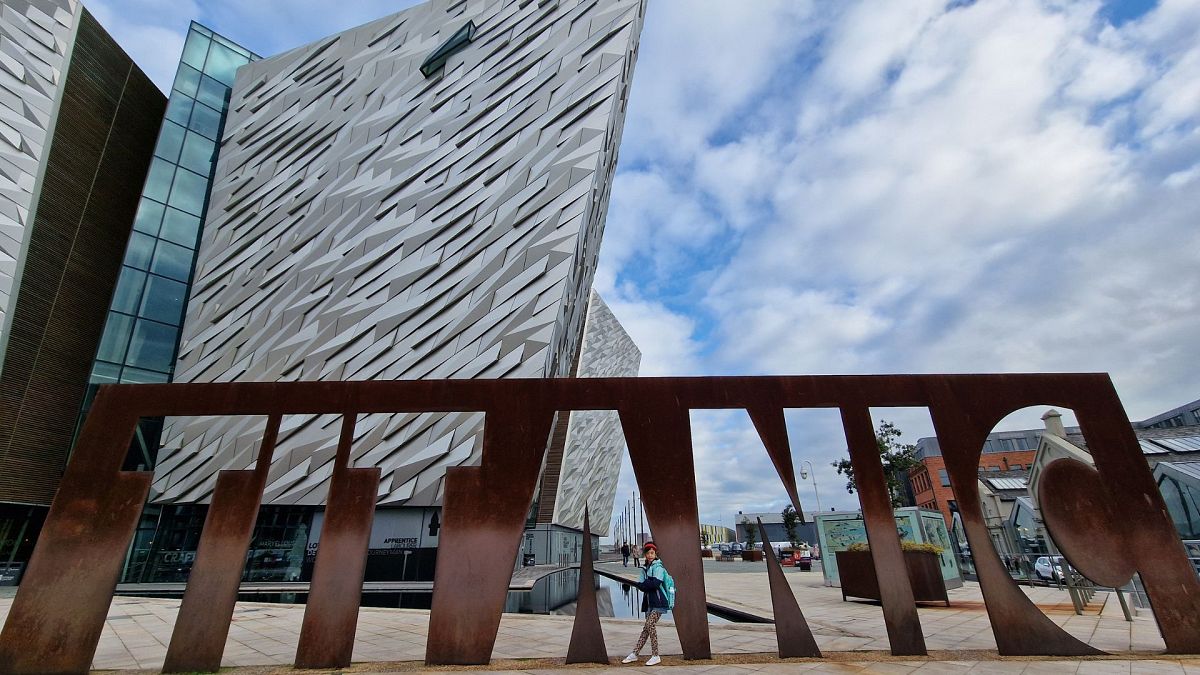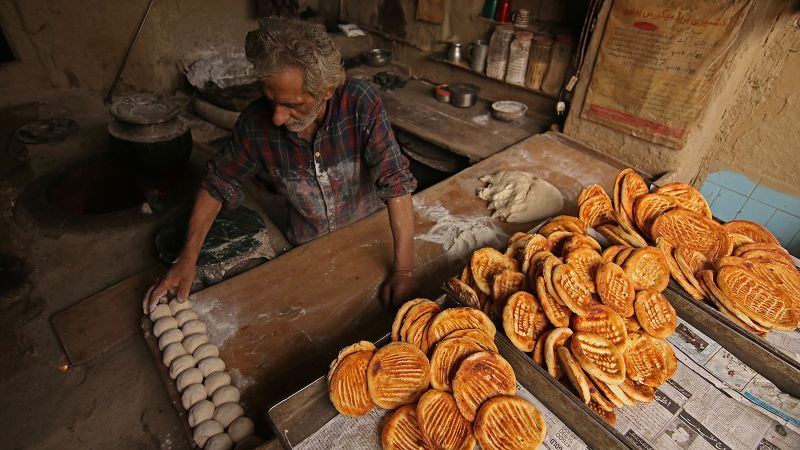In the Netherlands, a row about who should and shouldn’t get their stumbling stone has started…
What? Stolperstein (Stolpersteine for plural).
What’s a Stolperstein? It’s a 10cm cube made out of concrete, bearing a brass plate inscribed with the name and life dates of victims of Nazi extermination during the Holocaust. The name literally means “stumbling stone”. They can be found on the streets of more than 1,200 cities in Europe and are everywhere on Berlin’s cobblestone streets, becoming the world’s largest decentralised monument to the Holocaust. Stolpersteine commemorate not only Jewish victims, but also Romani people, homosexuals, Black people, the physically or mentally disabled and members of the anti-Nazi resistance. They are placed outside the victims’ last-known place of residence.
Age? The project to commemorate the victims of the Holocaust was initiated by German artist Gunter Demnig in Cologne in 1992. He installed the first Berlin Stolperstein four years later.
Why are these plaques in the news? In the Netherlands, which is marking 80 years of liberation, a row about who is entitled to get their stumbling stone has started. It centres around placing Stolpersteine for 45 Dutch political prisoners, including activists and communists, who were “experimentally” gassed by the Nazis at the Bernburg psychiatric clinic in Germany in 1942. There has been bureaucratic and financial resistance, as the Struikelstenen Haarlem foundation only has a municipal mandate to place Stolpersteine for 733 Jewish, Roma and Sinti Holocaust victims. It has been deemed that some victims do not fall into certain categories and that they should have a different mark of remembrance.
Elsewhere, Denmark has recently unveiled several Stolpersteine to commemorate the 80th anniversary on 19 September of a mass deportation of Danish policemen to concentration camps by Nazi soldiers. The stumbling stones highlight their courage in refusing to cooperate with the German occupiers.
Why does it matter? Stolpersteine focus on individual tragedies but represent an act of remembrance that also emphasises the scale and culpability of nations in the Holocaust. This recent controversy highlights the collusion of the Dutch state in turning over lists of “undesirables” to the Nazi authorities and shines negative light on the practices of the Dutch security services. This is something that many European nations have had to wrestle with, as a duty to face up to past sins can be a source of shame. It also highlights historical gatekeeping and that political victims should have the same respect as the Jewish ones – something not everyone agrees with.
Why have Stolpersteine been controversial? 20 years ago, the city council of Munich rejected the installation of Stolpersteine on public property, following objections raised by Munich’s Jewish community. Charlotte Knobloch, the head of the Jewish community in Munich and Bavaria, opposed the project. Knobloch, who survived the Holocaust, has stated that the placement of Stolpersteine on the street is unacceptable, as it is undignified. The Polish Institute of National Remembrance (IPN) also echoed similar reservations, noting that the location of the memorials on sidewalks is not respectful. The decision to reject Stolpersteine in Munich was upheld in 2015; alternative remembrance projects, including biographic plaques on columns, were favoured instead. Elsewhere, local resistance in the Paris and the Belgian city of Antwerp meant that the ground plaques were unable to be installed. The City of Paris’ head of remembrance stated that “Stolpersteine are not suitable for Parisian remembrance work” and that they “send out an image that is unsuitable for France, where 75% of Jews have survived.” Many denounce the desire to bury the past and shirk responsibilities.
Is it disrespectful? While not every city supports this type of commemoration, Stolpersteine are a subtle but powerful and metaphorically-rich act of remembrance. There’s also an argument to be made that if a passerby wants to read the inscriptions, they bow before the victim. And as Gunter Demnig is fond of saying, quoting the Talmud: “A person is only forgotten when his or her name is forgotten.”
Facts? The installment of a Stolpersteine is a lengthy process – often lasting up to 10 years. Each stone has a sponsor, who is responsible for writing a biography on stolpersteine-berlin.de. The sponsors also have to pay €120 per stone. The inscription on each stone begins “Here lived”, followed by the victim’s name, date of birth, and how they were murdered – usually with the name of the concentration camp where they were deported.
Read the full article here
















